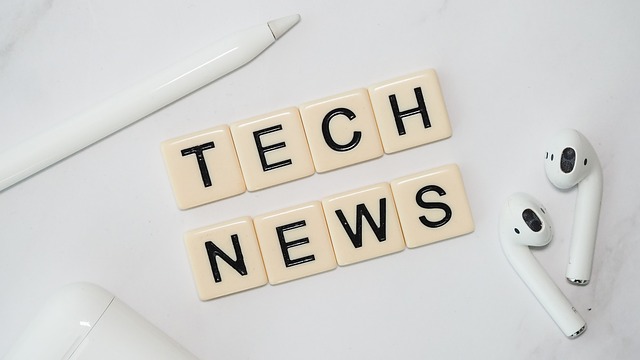Introduction: A Shifting Media Landscape
For most of the 20th century, traditional media called the shots. Television anchored living rooms. Newspapers set the news agenda. Radio filled the gaps in between. It was a top-down world—editors decided what mattered, and audiences tuned in when told.
Then the internet arrived, slow at first, then unmistakable. The real breaking point came with broadband, smartphones, and social media. Suddenly, content was everywhere, and everyone could publish. Audiences scattered. Ads followed. Attention span shrank.
Now, legacy media is in a fight for survival. Relevance is no longer a given. Revenue is bleeding into digital ecosystems they don’t fully control. And their reach? Strong in some corners, but shrinking as platforms shuffle the deck daily. The ground has shifted—and it’s not done moving.
How Digital Platforms Redefined Content Delivery
The old model of broadcast schedules and print deadlines didn’t survive the streaming era. People now expect to watch or read what they want, when they want. Streaming platforms delivered on that promise, and in doing so, rewired consumption habits across the board. Viewers left cable bundles behind. Readers stopped waiting for the morning paper. Everything became on-demand, and the expectation of instant access stuck.
Then came social media, and the definition of “content creator” blew wide open. You didn’t need a press badge or a studio—you needed a phone, an angle, and an audience. From beauty tutorials in a bedroom to breaking news at street level, platforms like Instagram, YouTube, and TikTok turned everyday users into broadcasters. With that shift, the gatekeepers lost their grip.
Now, algorithms determine what most people see. They push content that performs—clicks, comments, shares—not necessarily what’s important or accurate. This replaces the editorial filter with a personalization engine. It’s great for finding what you’re already into. Not so great for discovering what you didn’t know you needed. This tension—between scale and substance, popularity and credibility—is one of the defining challenges of the new media age.
Audience Migration: Where the Viewers Went
Audiences haven’t disappeared—they’ve just moved. Traditional TV lost its grip when platforms like YouTube, TikTok, and Instagram offered faster, more flexible ways to consume. Podcasts and email newsletters pulled attention too, especially from people wanting deeper, more curated content without the filler. The key difference? It’s all on-demand. Viewers decide when and how long to engage, not the network schedule.
Appointment viewing—once the norm for live TV or radio—is on its last legs. In its place: short bursts, bingeable series, and snackable updates that fit around daily life. There’s no waiting; if something pops, it’s accessible instantly. Creator-driven content also doesn’t pretend to be neutral. Younger audiences, in particular, tend to trust individual digital-native voices over polished, institutional brands. It’s raw, it’s direct, and crucially—it feels personal. And in a cluttered media landscape, personal still cuts through.
Economic Realities: Who’s Earning What
The money has moved. Ad dollars are chasing where the audience goes—and right now, that’s digital. Platforms like YouTube, TikTok, and even Substack are pulling in marketing budgets that used to be reserved for TV spots or full-page newspaper ads. It’s less about prestige and more about performance. CPC wins over circulation.
Traditional media outlets aren’t taking this lying down, but adaptation hasn’t been painless. Layoffs are routine now, not shocking. Design desks have shrunk. Entire sections have vanished. Paywalls are popping up like weeds, as publishers look for any direct-to-audience revenue they can lock in. Some are abandoning print altogether or shutting down multiple regional bureaus to consolidate resources.
Look at the case studies. The Chicago Tribune trimmed its print days. BuzzFeed News is gone, a cautionary tale wrapped in a digital success story. Meanwhile, TV networks like NBC are leaning into streaming via Peacock, and Disney launched its Hulu-Disney+ bundle to keep viewers in-house. These aren’t just side hustles; they’re lifelines.
Traditional media is learning to maneuver in a playground it didn’t build. The struggle now isn’t just creating content worth watching—it’s finding ways to fund it in an ecosystem built for speed, scrolls, and skip buttons.
Strategy Shift: How Legacy Media is Reacting
Traditional media isn’t dead—it’s adapting for survival. Hybrid newsrooms are now the norm, not the exception. Newspapers and broadcasters are ditching print- and air-first mentalities in favor of digital-first workflows. Speed, shareability, and SEO? All baked in from the first draft. Teams once siloed into TV, print, and online are now structured more like content squads, built around topics and platforms rather than formats.
At the same time, partnerships with tech giants are both tempting and risky. Deals with platforms like Google and Facebook offer reach and revenue, but at the price of dependence. Media execs are asking hard questions: If we rely on Big Tech for distribution, are we still in control—or just along for the ride?
Then there’s content repackaging—a reshuffle game that plays to new screens. A Sunday print exclusive gets trimmed into a 60-second vertical reel. A broadcast interview gets sliced into four YouTube Shorts and optimized transcripts. It’s still journalism, just delivered in formats the audience actually uses.
Traditional media is learning to play the platform game. They’re doing it clumsily at times—but they’re still in it.
The Power of Platform Control
The rules of distribution used to be simple. If you owned a printing press, a TV station, or a radio frequency, you owned the pipeline—and the message. Now, that power sits with the platforms. YouTube, Facebook, Apple News, TikTok—not only do they carry the content, they decide who sees what, when, and how often. Algorithms now serve as the invisible editors-in-chief, constantly tweaking visibility based on a black box of priorities.
This shift comes at a cost. For journalists and traditional media, editorial independence was once sacrosanct. You reported the facts. You hit publish. Today, you also need to appease an algorithm that favors engagement over nuance. Headlines lean emotional. Thumbnails get juiced. Stories bend toward shareability. That editorial compass? It can start to drift.
At the core, it’s a control issue. When distribution gets outsourced to opaque systems owned by profit-driven tech giants, the public’s access to balanced, crucial information gets diluted. It’s not just inconvenient—it’s dangerous. The long-term impact? A weakened press, more echo chambers, and a democracy that drifts further from informed citizenship.
What’s the fix? No silver bullet. But transparency, friction between editorial choices and algorithmic preference, and diversified content pipelines must be part of the conversation before the platform ends up owning the newsroom.
Glimpse Ahead: What the Future Holds
The fight for trust and attention won’t let up anytime soon. Audiences are sharper. They know when something is fluff, and they don’t have time for it. Traditional media has two options: compete on clarity or disappear in the noise. The smart players are betting on focus. Instead of trying to be everything to everyone, they’re diving deeper into niche territory—covering fewer topics, but doing it better.
Quality over quantity is the new rule. That means fewer breaking stories and more investigative depth. More explanatory journalism versus endless takes. It’s not glamorous, but it builds loyalty—something ad-chasing platforms can’t fake.
Expect continued convergence across the board. Old-school outlets will partner with digital influencers. Streaming and linear will keep blurring. You’ll see more experiments—AI-curated editions, interactive formats, subscriber-first drops. Some will flop. A few will redefine the game. Either way, the next phase isn’t about going back. It’s about doubling down on what still works and finally letting go of what doesn’t.
Bonus Read: Stay Informed with Industry Recaps
For readers looking to dive deeper into recent shifts and strategic moves across the media landscape, additional resources can be invaluable. One standout source is Spin Corporate Pulse’s monthly update, which compiles key developments in a clear, digestible format.
Why This Recap Matters
- Covers top headlines across digital platforms and traditional outlets
- Tracks trends in monetization, content strategy, and audience behavior
- Offers expert insights from media analysts and insiders
Whether you’re a content creator, journalist, media exec, or just a curious reader, staying current with these updates helps you better understand where the media industry is heading.
Explore the Latest Recap: Monthly Recap: Major Media Industry Developments
Final Take
This isn’t a tech smackdown or a nostalgia tour. Traditional media isn’t dead—it’s just under reconstruction. The clear line between old and new has blurred into something more dynamic. Legacy outlets are no longer competing with digital upstarts; they’re learning to coexist, sometimes even taking a few notes.
What cuts through now is value. Not flash, not format—value. Creators and institutions that show up with relevance, clarity, and purpose are the ones that break through. Whether it’s a TikTok explainer or a long-form documentary, the medium matters less than how effectively the story lands.
Adaptability is the new credibility. The media players surviving the shakeup are the ones who learn fast, publish smart, and update without losing the thing that made them trustworthy in the first place. Identity matters—but so does evolution. Honest innovation beats clinging to tradition. And those who get that balance right? They’re not just surviving. They’re setting the bar.




